
Regulatory Compliance Testing for IoT Devices @Wi-Fi 6/6E
Wi-Fi Alliance Certified Wi-Fi 6/6e Products:
In fact, it’s not just Wi-Fi 6; there are also many Wi-Fi 6e products, including chips, modules, and various terminals such as mobile phones, computers, routers, PCI cards, and 8K UHD TVs, as shown in the image below. These products also come from leading manufacturers in various Wi-Fi fields. In China, since the Wi-Fi 6e frequency band has not been opened, we have not yet seen any domestic Wi-Fi 6e products. Of course, as we understand, some domestic manufacturers are actively researching Wi-Fi 6e, aiming for foreign Wi-Fi markets.
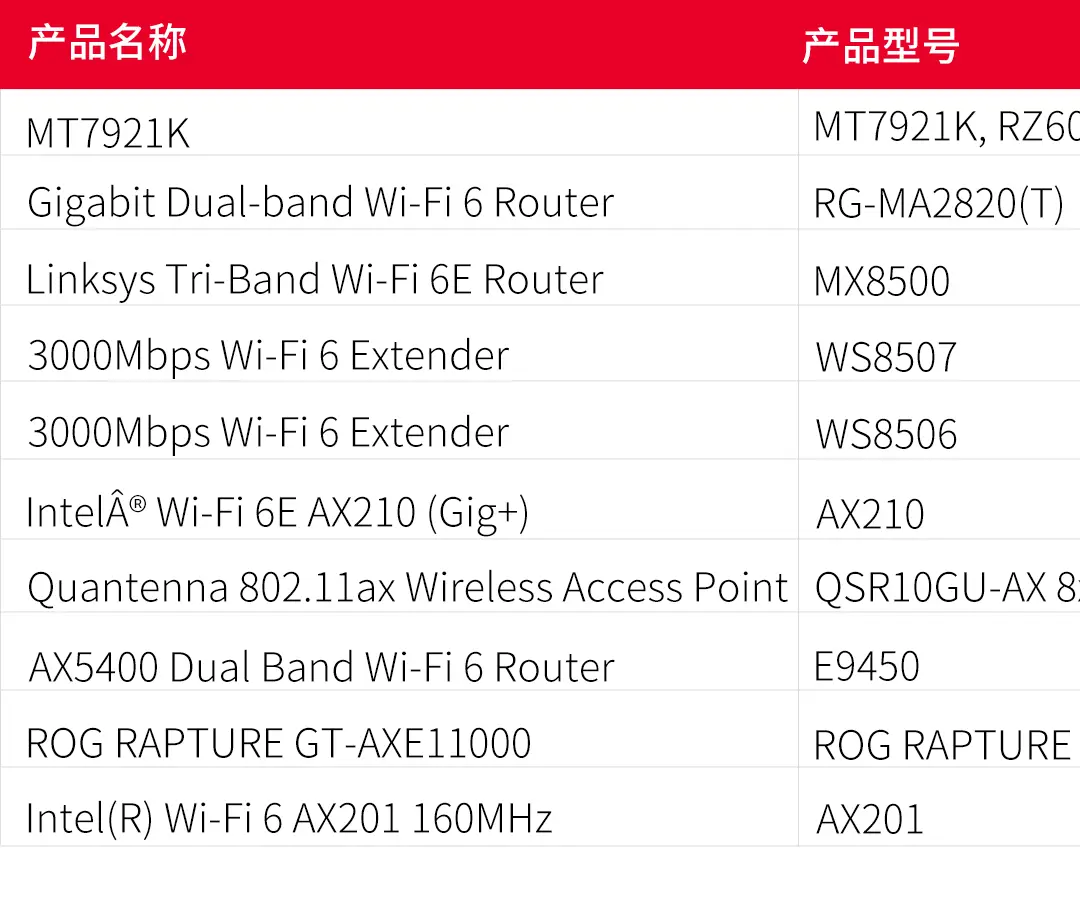
Which countries have opened or are considering opening Wi-Fi 6e frequency bands?
As shown in the image below, by the end of April this year, some countries and regions have opened the Wi-Fi 6e frequency bands, such as the United States, Brazil, Chile, South Korea, the United Kingdom, and the European Union. However, the opened bands vary; some have only opened 500M of the band, like the EU countries, while others have opened the entire 1.2G band. Other countries are considering opening 500M bands like the EU, such as Argentina and some Middle Eastern countries; and some countries like Japan are considering opening the entire 1.2G band.
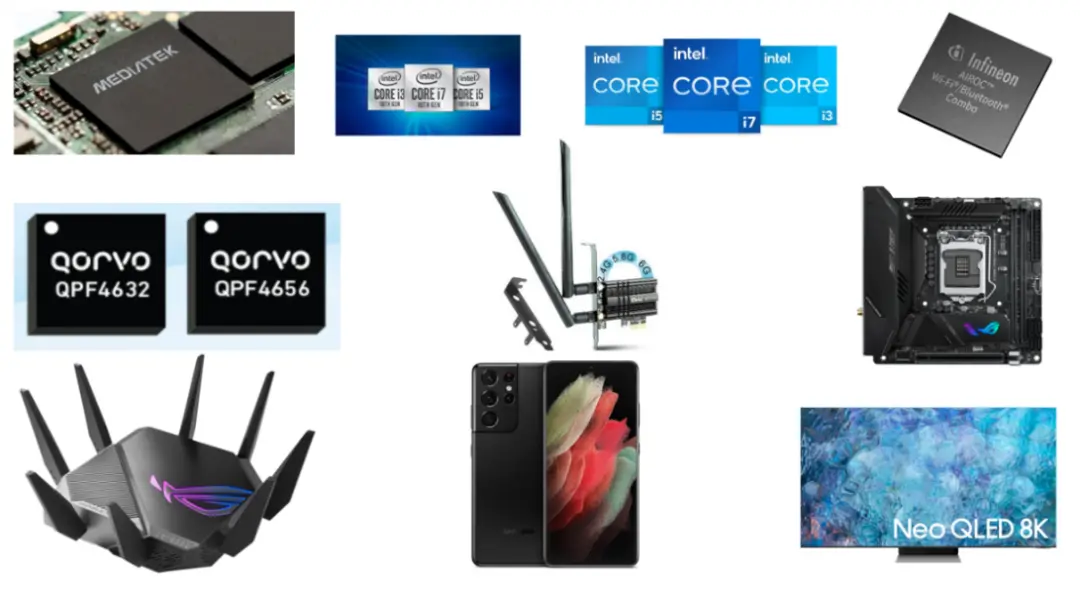
What is regulatory compliance testing for IoT devices?
Since RF devices emit signals, they can interfere with other devices and affect their operation. In most countries and regions, some radio spectrum and emergency service radio devices are not allowed to be interfered with. Therefore, various radio and other RF devices must be regulated to protect the radio spectrum and ensure that emergency services are not affected.
To achieve this, all radio products must pass tests by local national and government authorities (authorized agencies) to be allowed for use in the area. This test is regulatory compliance testing. Regulations refer to the requirements set by national and government authorities for the use of radio devices in the area.
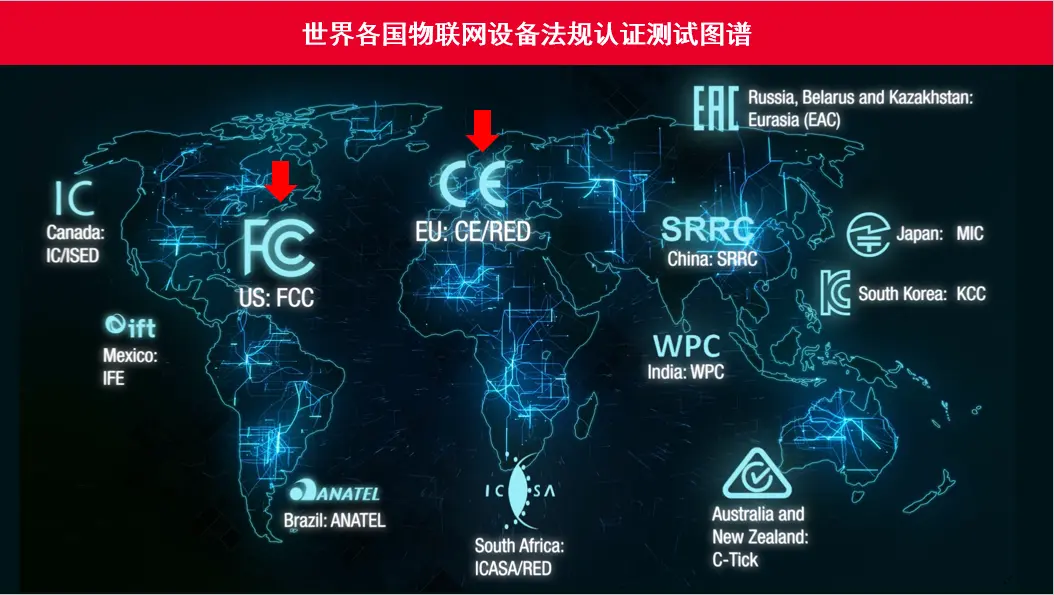
Regulatory Agencies in Different Countries:
As shown in the image below, China's regulatory agency is the National Radio Committee, the U.S. regulatory agency is the Federal Communications Commission (FCC), and the EU regulatory agency is the CE/RED Directive Committee. After passing the relevant tests, IoT products will generally have corresponding labels such as FC, CE, and SRRC on the back, indicating that the product can be produced or sold in the corresponding areas.
What are the testing items for regulatory certification and what standards are followed?
Current regulatory compliance testing for IoT devices (ISM band) mainly follows two major standards: fcc part 15.247 and Part 15.407, and ETSI standards EN300328 and EN 301 893. Almost all other regional testing standards are evolved from these two standards, with slight variations according to each country's frequency regulations. China mainly follows ETSI-related standards.
Test Items:
Whether it's ETSI or FCC standards, they mainly test the physical layer RF indicators, including transmission and reception, focusing on frequency accuracy, power accuracy, power control effectiveness, bandwidth accuracy, and the size of spurious/radiation emissions. A particularly special and complex test item is DFS (Dynamic Frequency Selection), which tests the device's radar signal avoidance mechanism effectiveness and is one of the testing challenges.
Impact of Wi-Fi 6/6e Introduction on IoT Regulatory Compliance Testing:
As mentioned earlier, FCC and ETSI regulatory testing standards mainly focus on power and frequency testing. For standalone Wi-Fi 6, testing items have not changed much. Although Wi-Fi 6 introduces new technologies, the frequency band and power requirements have not changed. The changes mainly occur within the device itself, such as higher-order modulation and increased antenna numbers, thus having minimal impact on testing. However, the introduction of Wi-Fi 6E is different due to the change in frequency bands, requiring relevant tests on the expanded bands.
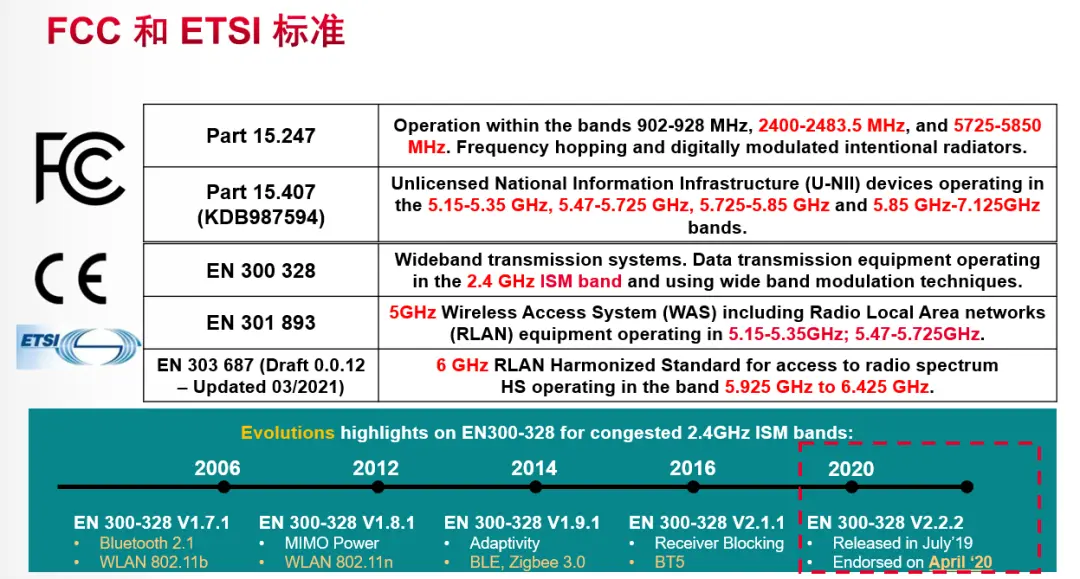
As shown in the standards table above, FCC Part15.407 has expanded the device working frequency bands, covering the upper limit of the Wi-Fi 6e band at 7.125GHz; ETSI's standard has added EN 303 687 (currently in draft stage) to describe Wi-Fi 6e device testing content.
Challenges of IoT Regulatory Compliance Testing:
The challenges of IoT device regulatory compliance testing mainly concentrate on several aspects:
1. ETSI Adaptive Testing (Adaptivity): This test verifies the product's ability to share channels, detecting over a very long time interval, generating large amounts of data, and processing this data requires time.
2. Dynamic Frequency Selection (DFS) Testing: This test verifies the device's radar signal avoidance capability. There are various radar signals, each with different frequencies, requiring repeated testing, which is very time-consuming.
3. Frequency Hopping State Testing: With many channels, each channel's detection interval is long, and detection speed is fast. In addition, the device’s adaptive and non-adaptive modes under interference conditions extend the testing time.
4. MIMO Power Testing with Up to 8 Antennas: High synchronization requirements, with signal synchronization times less than 500ns.
Email:hello@jjrlab.com
Write your message here and send it to us
 UL Compliance and ETL Certification for LED Lighti
UL Compliance and ETL Certification for LED Lighti
 What is the IEC 60598 Standard?
What is the IEC 60598 Standard?
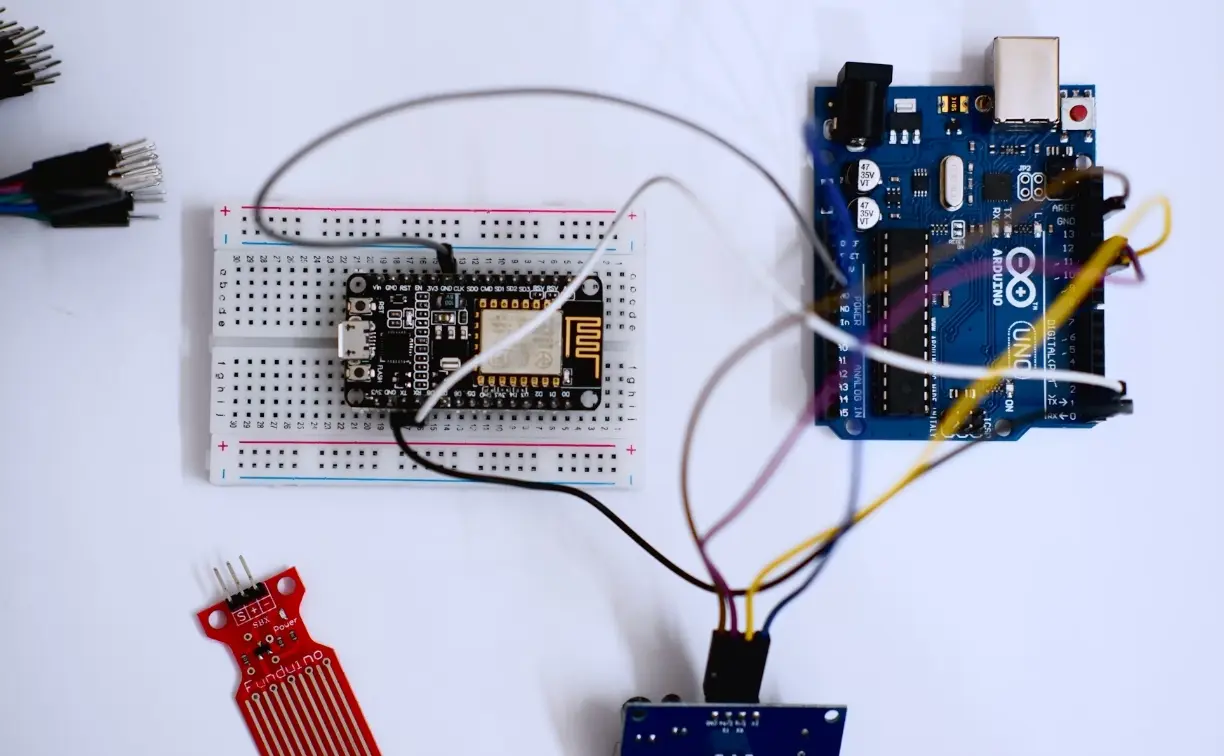 What is the Canada IC Logo?
What is the Canada IC Logo?
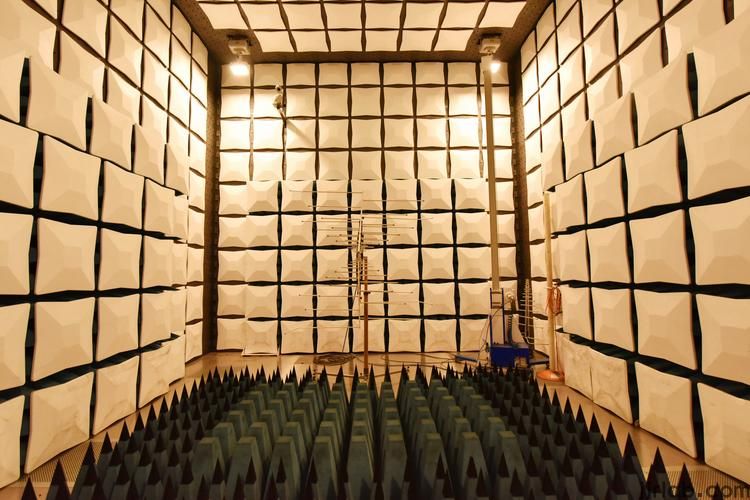 EMC Pre Compliance Testing
EMC Pre Compliance Testing
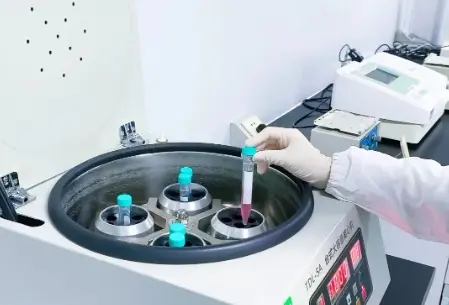 PAHs Testing (Food and Textile)
PAHs Testing (Food and Textile)
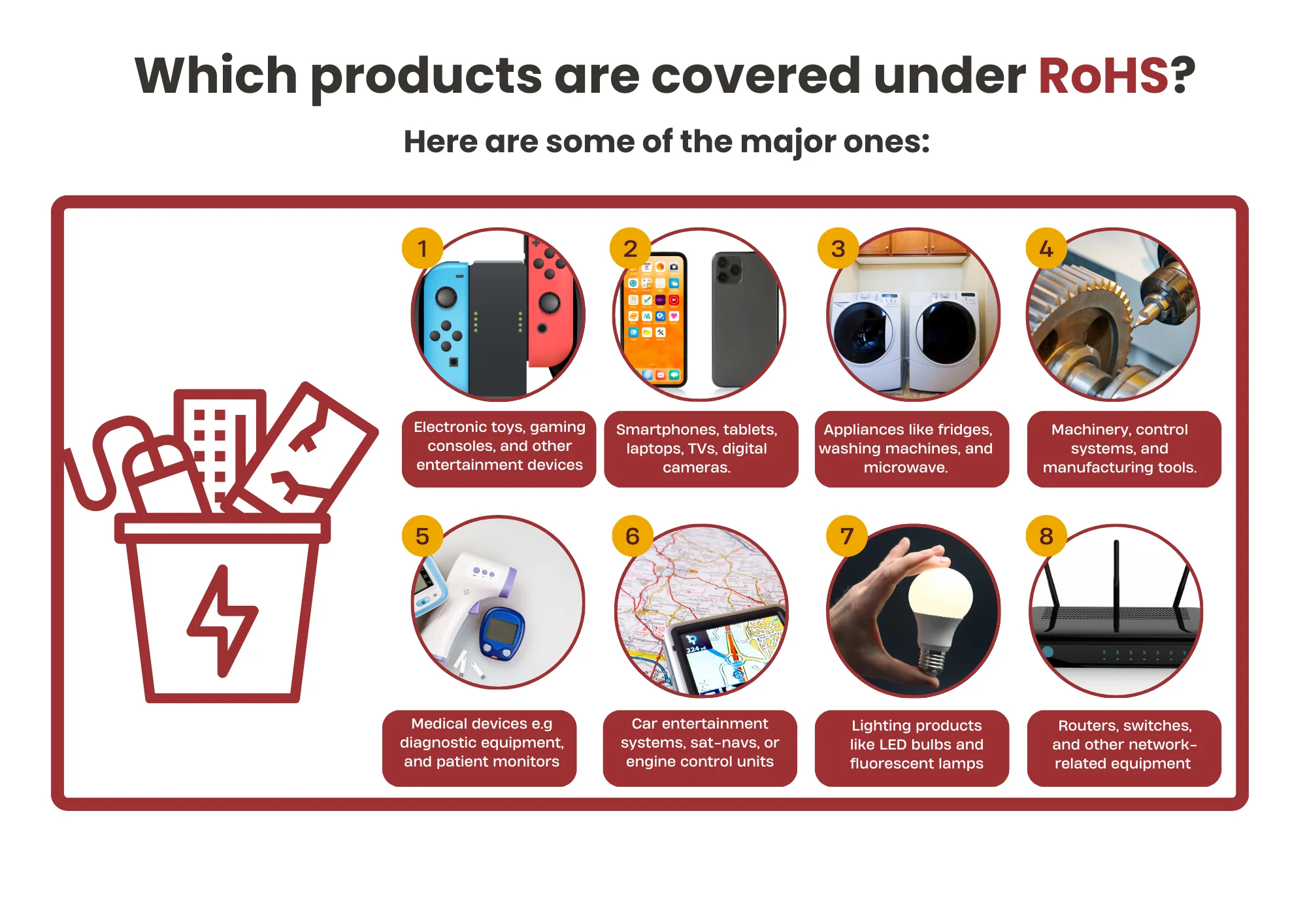 Where to Apply for the EU RoHS Test Report?
Where to Apply for the EU RoHS Test Report?
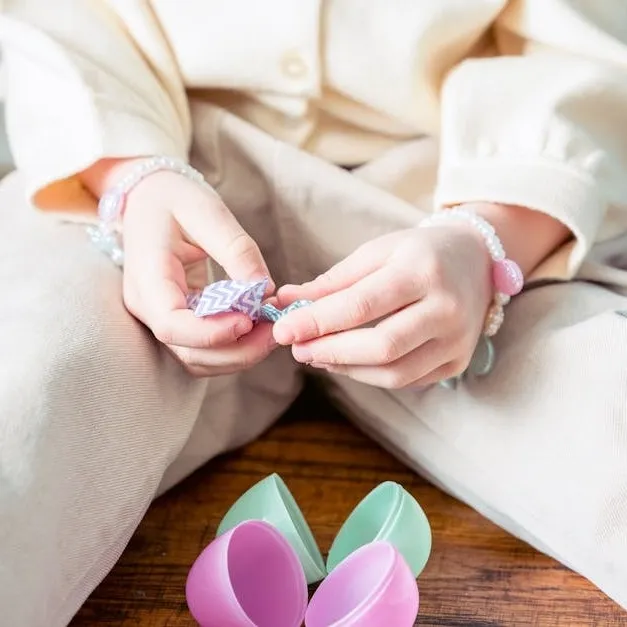 Children’s Products and Toy Testing
Children’s Products and Toy Testing
 What is a GB 31701 Test Report?
What is a GB 31701 Test Report?
Leave us a message
24-hour online customer service at any time to respond, so that you worry!




